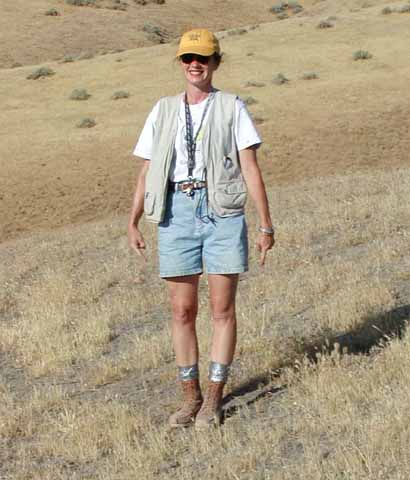see Map showing Mitchell
Map showing Bloch
Anyone wishing to attend the lecture only is welcome at no cost.
This will be the 359th meeting since 1954.
Abstract
Cold seeps are sites where fluids enriched in methane, hydrogen sulfide and other reduced compounds 'leak' from sediments into overlying sea water or fresh water. Like hydrothermal vents (a.k.a. 'black smokers') they typically support lush, deep water communities of exotic animals such as tube worms and large bivalves. Unlike hydrothermal vents, cold seeps emanate low temperature fluids and hydrocarbons and produce carbonate rather than sulfide deposits. As recorders of the evolution of basins, organisms, and hydrocarbon reserves cold seeps have attracted considerable attention: since their discovery 30 years ago hundreds of active cold seeps and dozens of ancient cold seeps have been identified worldwide. Surprisingly, the best exposed cold seep known is preserved nearby in late Cretaceous-early Paleocene shales of the Moreno Formation in the Panoche and Tumey Hills (PTH). In this northwestern San Joaquin Basin locality a 20 km long network of interconnected sandstone intrusions linked to overlying fossiliferous cold seep carbonates represents an extensive and complete seep system, from underlying fluid pathways to sea floor seep deposits and associated chemosynthetic communities. Tube worms were the dominant macrofauna, but bivalves, gastropods, corals, and microbial mats also colonized these seeps during approximately two million years of gas and fluid leakage along this portion of the western margin of the Great Valley forearc basin. This site is one of several ancient cold seeps thus far identified in the Great Valley but its timing, scale, macrofauna and longevity are unique.About the Speaker

Hilde Schwartz in the Panoche Hills
Hilde Schwartz completed received a B.A. in Geology from UC Santa Barbara in 1978 and a Ph.D. in Earth Sciences from UC Santa Cruz in 1983. She is presently a lecturer and researcher in the Earth Sciences department at UC Santa Cruz. Her interests include taphonomy, dinosaur paleobiology and paleoenvironments, sedimentology and bone preservation.
Reservations: The preferred way to make reservations is simply to email Janice Sellers at janice@seismosoc.org ASAP, tell her you will attend, commit to pay, and bring your payment to the meeting. Janice always emails a confirmation; if you don't get one, assume email crashed yet again and email her a second time. A check made to "PGS" is preferred, payable at the meeting.
If you want to pay in advance:
Stanford faculty and students: Please make dinner reservations by ASAP. Contact Dr. Juhn Liou via his mailbox (and leave check), Geological and Environmental Sciences Office, Geocorner - Bldg. 320 (Rm. 118). Make checks out to "PGS."
All others, including faculty and students from other Bay Area universities and colleges and USGS: Please make dinner reservations by ASAP. Contact Janice Sellers, at Seismological Society of America, 201 Plaza Professional Building, El Cerrito, CA 94530, phone (510) 559-1780. Send check made out to "PGS" to Janice.
Dinner is $30.00. Includes wine (5:30 to 6:15 PM.), dinner (6:15-7:30 PM.), tax, and tip.
For students from all universities and colleges, the dinner, including the social 3/4-hour, is $5.00 and is partially subsidized thanks to the School of Earth Sciences, Stanford University (Note, no-show reservations owe the full price).
Doris, whose wonderful crew prepares our meals, asked that we let you know that people who are late RSVP'ing and people who show up without a reservation will be welcome but that they will be eating on paper plates with plastic utensils (food supply permitting).
Dues for Academic Year 2003-2004 ($10.00) should be sent to Janice Sellers, Seismological Society of America, 201 Plaza Professional Building, El Cerrito, CA 94530. Janice's phone: (510) 559-1780.
Officers: Cheryl Smith, President; Mike Diggles, Vice President; Vicki Langenheim, Secretary; Janice Sellers, Treasurer; Adina Paytan, Field-Trip Czarina

Click Here for Future Events
Date created: 1/8/2004
Last modified: 1/8/2004
Created by: Mike Diggles, Vice President, PGS.
c/o U.S. Geological Survey, MS-951, 345 Middlefield Road, Menlo Park, CA 94025. (650) 329-5404. email Mike Diggles at mdiggles@usgs.gov
